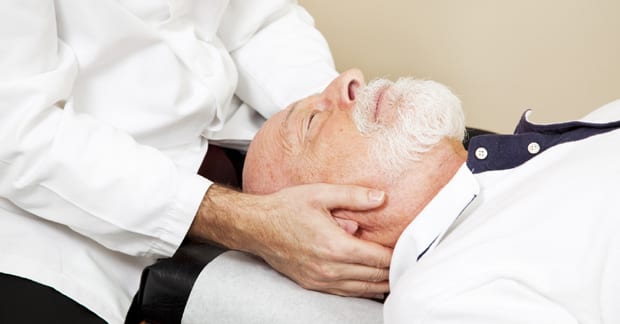Headaches are one of the most common reasons people seek chiropractic care. Many patients with headaches benefit significantly from adjustments made to the upper cervical region. So, the question is, how does adjusting the neck help headaches? To help answer this question, let’s look at a 2011 study that examined this exact issue…
It’s been said that if one understands anatomy, determining WHERE the problem is located becomes easy. So, let’s take a look at the anatomy in the upper most part of the neck. In the study, the authors found an intimate relationship between the muscles that connect the upper two cervical vertebra (C1 and C2) together and their anatomical connection to the dura mater (the covering of the spinal cord). They identified this anatomical connection between the muscles that span between the back aspect of C1/2 and the dural connection as having a significant role in the development of headaches usually referred to as cervicogenic headaches.
There are several reasons why chiropractors adjust or manipulate the upper cervical vertebrae in patients with headaches. The obvious reason is simply because it helps to reduce the intensity, frequency, and duration of headaches. The reason it works is this: If one or both of the upper two vertebrae (C1 and C2, also referred to as the atlas and axis, respectively) are either blocked or fixed and cannot properly move, then there is an abnormal change in the biomechanics in that region. Similarly, if one of the two vertebrae is rotated or shifted in reference to the other, a similar biomechanical “lesion” or problem occurs. You can take all the over-the-counter pain relief or perhaps stronger prescription medications you want to treat the headache, but it is not logical that a biomechanical problem at C1 and/or C2 is going to change by inducing a chemical change (i.e., taking a pill). All you’re doing is masking the symptoms for a while, at best.
Many people find that after a several chiropractic adjustments, their headaches significantly improve. This is because restoring proper biomechanics to the C1/2 region reduces abnormal forces on the vertebrae as well as any abnormal pull or traction of the posterior cervical muscles on the dural attachment. It has been reported that the function of this muscle/dura connection is to resist excessive movement of the dura towards the spinal cord when we look upwards and forwards. During neurosurgery, doctors have observed mechanical stress on the dura in patients with headaches. In chronic headache sufferers, adjustments applied to this area results in significant improvement. There is no other treatment approach that matches the ability that adjustments or manipulation have in restoring the C1/2 biomechanical relationship thus, helping the headache sufferer. Another treatment option that has been shown to benefit the headache patient is injections to this same area. However, given the side effects of cortisone, botox, and other injectable chemicals, it’s clear that chiropractic should be utilized first. It’s the safest, most effective, and fastest way to restore function in the C1/2 area, thus relieving headaches.
Thousands of Doctors of Chiropractic across the United States and Canada have taken "The ChiroTrust Pledge":
“To the best of my ability, I agree to
provide my patients convenient, affordable,
and mainstream Chiropractic care.
I will not use unnecessary long-term
treatment plans and/or therapies.”
To locate a Doctor of Chiropractic who has taken The ChiroTrust Pledge, google "The ChiroTrust Pledge" and the name of a town in quotes.
(example: "ChiroTrust Pledge" "Olympia, WA")
Content Courtesy of Chiro-Trust.org. All Rights Reserved.

